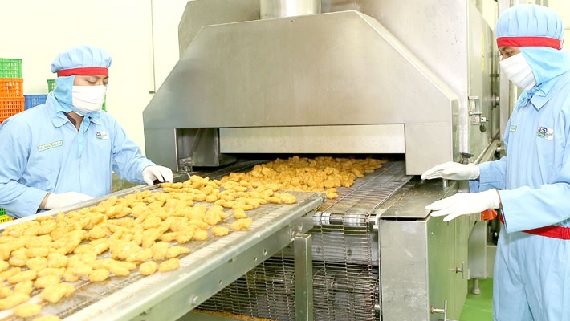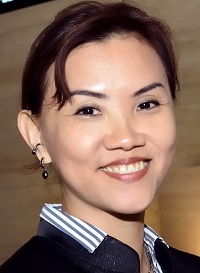 This article, written by Jennifer Tan (left, Director, Research & Products, Equities & Fixed Income, at the Singapore Exchange), originally was published in SGX's kopi-C: the Company brew series on 29 April 2016. The article is republished with permission.
This article, written by Jennifer Tan (left, Director, Research & Products, Equities & Fixed Income, at the Singapore Exchange), originally was published in SGX's kopi-C: the Company brew series on 29 April 2016. The article is republished with permission.
Keeping cows and chickens happy is an important part of Tan Yong Nang’s job description.
The S-ramp reduces stress to livestock by taking advantage of natural cattle behaviour. |
Integrated Agri-Food Chain
Japfa, which listed on SGX in August 2014, has a market capitalisation of S$1.2 billion. Between 2013 and 2015, it averaged an annual revenue of US$2.81 billion (S$ 3.8 billion), operating profit of US$203.3 million, and core profit after tax and minority interests (PATMI) of US$52.9 million (S$70.8 million). Core PATMI without foreign exchange averaged US$68.7 million (S$93.0 million) over the period.
For Japfa, core PATMI, which excludes biological asset valuation, is an important measure of income attributable to shareholders. The company goes a step further to provide estimated core PATMI without forex that helps shareholders better understand its operating performance.
In the 2016 year-to-date, Japfa shares have generated a total return of 50%, compared with the benchmark Straits Times Index’s (STI) total return of 0.8%.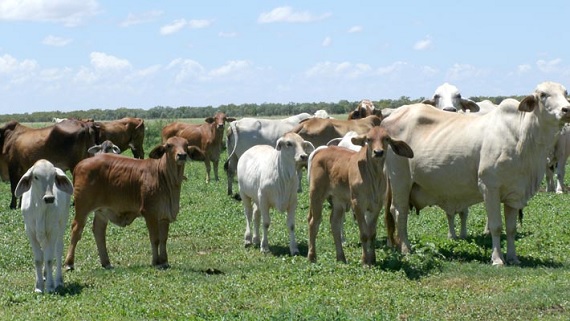 Japfa's dairy farm in Malang is the largest in Indonesia.
Japfa's dairy farm in Malang is the largest in Indonesia.
(Photo: Company)
Backed by two generations of farming experience, Japfa operates industrial-scale farms that are vertically integrated across the value chain – from feed production and breeding to milking and fattening, as well as food processing and distribution.
Japfa’s 58%-owned unit PT Japfa Comfeed Indonesia Tbk is listed on the Indonesia Stock Exchange, and runs the country’s largest dairy farm in Malang, East Java, with 7,900 heads of Holstein cattle.
It operates poultry, cattle and aquaculture breeding farms, as well as animal feed manufacturing plants in the country.
|
- Tan Yong Nang Japfa |
In China, the Group owns a hub of five dairy farms in Shandong province, with nearly 55,000 heads of Holstein cattle.
Its premium raw milk is sold to leading producers like Inner Mongolia Yili Industrial Group Co Ltd and China Mengniu Dairy Co Ltd.
It also runs a beef cattle rearing and fattening farm in the province.
In the rest of Asia, Japfa operates poultry and swine feedmills and farms in Vietnam, as well as poultry feedmills and breeding farms in Myanmar and India.
For consumer food, Japfa sells ambient temperature, chilled/frozen meat products and snacks under the So Good, So Nice and Good Sozzis brands in Indonesia, while its Greenfields label is the top choice for fresh milk in the country. It also owns the So Yumm brand for shelf-stable sausages in Vietnam.
“Our dream is to become a pan-Asian multinational with a good handle on all the major protein groups,” said Tan, who was appointed Group CEO on 1 January, 2014.
| ♦ Developing Expertise, Building Scale | ||||||||||||||
|
Before joining Japfa, the Bachelor of Arts in Economics graduate from University of Cambridge helmed Delifrance Asia Ltd in 2003, and was named COO of Li & Fung Group in 2005. Prior to that, he established his career with private equity group PAMA, and was part of a senior team responsible for its overall portfolio.
Another key element is breeding, which is at the heart of Japfa’s operations. |
||||||||||||||
Wind in the Sails
Longer term, Japfa’s growth outlook is bright, Tan said.
The company plans to add another hub of five farms, with a holding capacity of 60,000 cattle, in Inner Mongolia. There, it has completed a sixth farm with 9,000 heads of cattle, and milking operations began in the first quarter.
Its swine business is experiencing aggressive growth in Vietnam, while demand for raw milk continues to expand in China.
Myanmar also offers good potential due to under-consumption of proteins in the country, he said. “In Indonesia, protein consumption is low, but in Myanmar, it’s next to nothing.”
Japfa is also well-placed to grow its consumer foods division, given the leading positions of its brands.
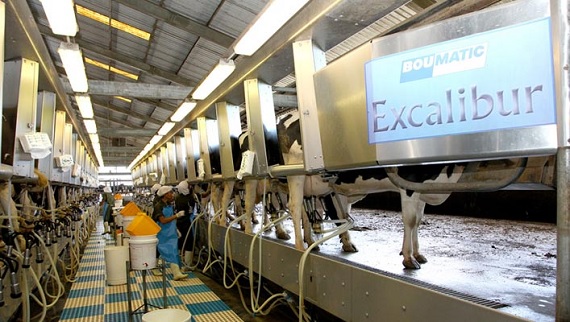 Japfa's milk processing plant with world-class standards in productivity and bio-security. (Photo: Company)
Japfa's milk processing plant with world-class standards in productivity and bio-security. (Photo: Company)
“Consumers are still buying from the wet market today, but when customers switch to the supermarket and convenience store, we’ll be able to tap on it. Our sails are ready – we’re just waiting to catch the wind,” he added.
Likewise, aquaculture will continue to gain relevance, Tan said. Japfa operates five aqua feedmills, as well as several fish and shrimp hatcheries in Indonesia.
“Farmed fish are overtaking catch in the wild. It is likely that for the next generation of consumers, they will be eating more farmed fish than sea catch.”
Looking back, Japfa’s decision to expand beyond its Indonesian roots was instrumental to its growth, Tan said.
“Eight years ago, Japfa was very Indo-centric. I saw the opportunity to grow the business across geographies and across protein classes – not only to run a profitable enterprise, but also to impact people’s lives for the better.”
| ♦ Get Your Hands Dirty |
|
It’s all about being bold in setting goals, and having the tenacity to overcome challenges that arise. “I’m quite stubborn that way,” he smiled. |
Financial results
| Year ended 31 Dec (US$ m) |
FY2015 | FY2014 | FY2013 |
| Revenue | 2,787 | 2,948 | 2,697 |
| Operating Profit | 216.6 | 191.5 | 201.8 |
| Core PATMI without forex* | 88.6 | 56.8 | 60.7 |
| Quarter ended 30 Sep (US$ m) |
3Q2016 | 3Q2015 | YoY Change |
| Revenue | 788.0 | 695.3 | 13.3% |
| Operating Profit | 105.4 | 65.8 | 60.1% |
| Core PATMI without forex* | 42.0 | 27.9 | 50.9% |
Source: Company data
*Core PATMI is derived by excluding changes in the fair value of biological assets and extraordinary items.
Core PATMI without forex further excludes foreign exchange gains and losses.
| Outlook | ||
|
||
Japfa Ltd
Japfa is an industrial agri-food company that specialises in producing quality dairy, protein staples (poultry, beef, swine & aquaculture) and packaged food in Asia. Their business model links three distinct stages of the value chain – Upstream (Feed & Breeding), Midstream (Milking & Fattening) and Downstream (Processing & Distribution). It employs over 30,000 people across an integrated network of modern farming, processing and distribution facilities located in Indonesia, China, Vietnam, India and Myanmar. Japfa is headquartered in Singapore.
The company website is: www.japfa.com
For its 3Q2016 financial statements, click here.


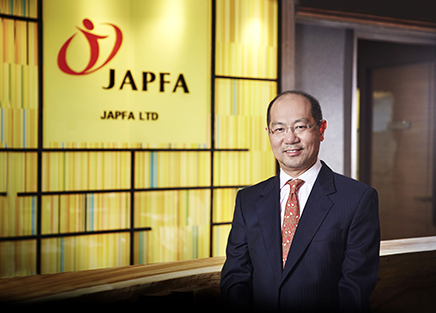
 “We’ve adopted a sophisticated approach to animal health, nutrition, welfare and husbandry – all of which reinforce our high production yields and the quality of our products.”
“We’ve adopted a sophisticated approach to animal health, nutrition, welfare and husbandry – all of which reinforce our high production yields and the quality of our products.”  Our dream is to become a pan-Asian multinational with a good handle on all the major protein groups.
Our dream is to become a pan-Asian multinational with a good handle on all the major protein groups.